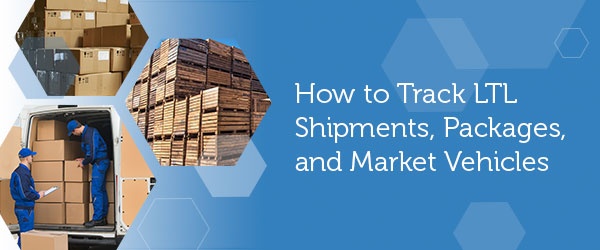The rapid pace of globalization and trade is making supply chain and transport networks more complex than they’ve ever been.
A single mode of transport cannot fulfill the requirements of today’s supply chains; multimodal transport is the only option to efficiently and cost-effectively handle the movement of cargo.
“Efficiently” is a relative term though.
A multimodal transport system involves the joint use and close coordination of several modes of transport over road, rail, air, water, as well as other unconventional means of last-mile delivery like drones.
While the concept of multimodal route optimization is pretty straightforward — find the shortest AND most cost-efficient path between two points — it’s seldom as simple as that.
While there may be several unique factors that hamper the overall efficiency of a multimodal supply chain, the root cause for multimodal route inefficiencies or disruptions can usually be traced to one or more of these:
1 - Inaccurate ETA Predictions
When you’re trying to string together a multimodal route, it’s important that shipments meet a tight window of drop-off or delivery, especially when cargo needs to be loaded/unloaded onto a long-haul mode of transport like ocean liners or freight trains.
It helps if there’s a better idea of when cargo is expected to arrive; you know whether to rest easy or make alternative arrangements if the shipment won’t make it before its connecting transport departs.
Alternatively, knowing when a shipment is expected to arrive also helps you organize assets (like personnel, pallets, or packaging) better so goods can move out as soon as they arrive at a sorting or distribution facility.
2 - Lack of Immediate Reporting in Case of Delays or Disruptions
Accurate updates and real-time information are crucial to the process of route planning, dynamic network modeling, and transport optimization — doubly so for multimodal route optimization.
There may be a lag in reporting any events or circumstances that could lead to delays in delivery or order fulfillment, despite strict processes in place to the contrary.
Any lag in reporting disruptions can cause a cascade, reducing your ability to take preemptive measures to reduce the impact of the delay down the line.
3 - Difficulties Due to Freight Consolidation
Shippers frequently split the cost of multimodal transportation by consolidating their Less than Container Load (LCL) or Less than Truck Load (LTL) shipments, relying on a third-party logistics (3PL) company to handle movements and deliveries.
While that does help reduce cost, it also adds several complications like coordinating between multiple carriers, multiple drops, repackaging when switching between modes of transport, as well as issues with capacity planning like organizing manpower or storage space across disparate facilities.
This complexity coupled with the lack of effective shipment tracking and live disruption alerts makes it difficult to manage, much less optimize, multimodal transport planning.
How to Improve Multimodal Route Optimization
There are plenty of factors that play their part in causing delays and disruptions in transportation, especially for long-drawn multimodal supply chains that span continents.
Most of them, however, are manageable — even avoidable — if you have a better idea of what’s going on as things happen.
Organizations that want to perform better don’t need to rely on static modeling methods and historic data to optimize their multimodal routes. They now have the option of dynamic optimization using live shipment tracking data. It’s easier now thanks to smart tracking devices that can be used to track everything — from individual packages to the pallets they’re on — as they move throughout a supply chain, no matter the mode of transport.
When used in tandem with other contextually important live information like weather patterns, traffic disruptions, or lane congestion along the most popular shipping routes, monitoring more thoroughly is the simplest, yet most effective way to better manage bottlenecks and disruptions in a multimodal supply chain.
Organizations that leverage the latest in supply chain monitoring technologies can improve delivery management, order fulfilment, and the degree to which they can streamline operations, giving them an edge over competitors.
















